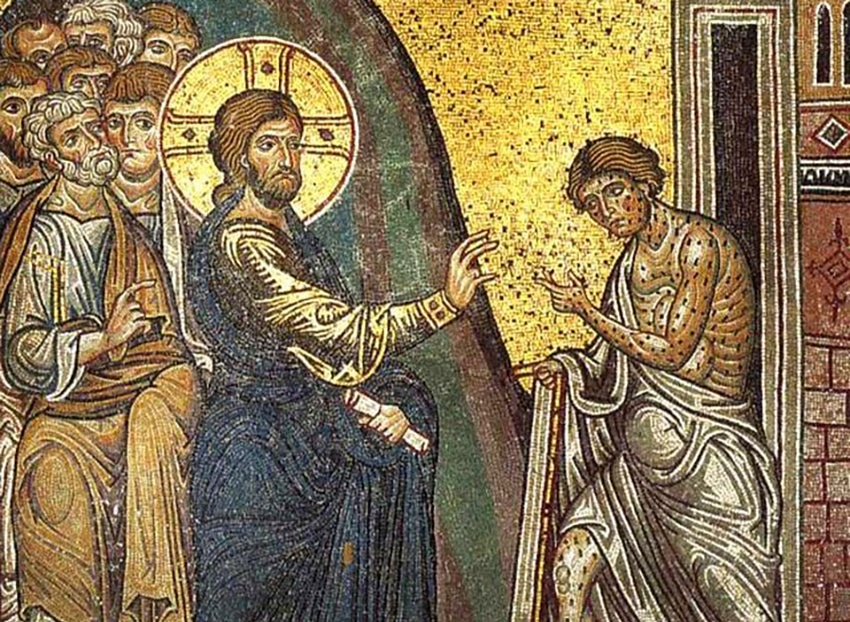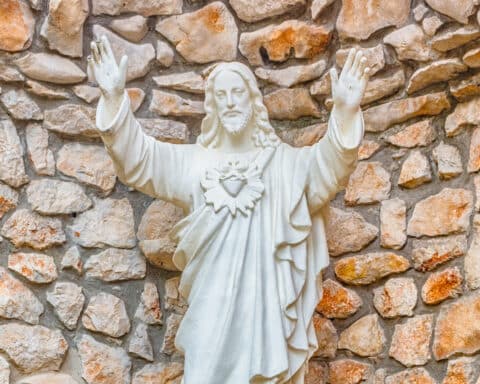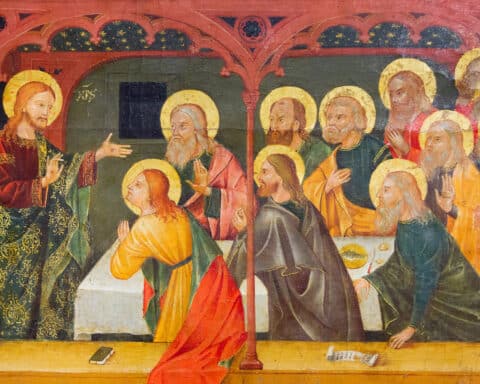This Sunday’s readings are a part of the urgent call that frames Mark’s whole Gospel: “Prepare the way of the Lord, make his paths straight … repent, and believe in the gospel” (Mk 1:3, 15). In the particular passage read in the liturgy this Sunday, hearing this call is a matter of identifying with the lepers presented in the readings and thus understanding the spiritual reality they represent.
Let us begin with the latter task: understanding what the lepers come to represent within the scriptural text — a text that we know, as Scripture, is larger than its letter. We can do this best by looking closely at the reading from Leviticus.
First, friends, notice that in Leviticus, the person who is thought to have leprosy is not brought to a doctor. Rather, he is brought “to the priest.” Further note that the priest does not declare the leprous person sick, but “unclean.” And, finally, we can take note of the consequences for the leper: He must publicly declare himself “unclean” and “dwell apart,” in isolation from the community. To be “unclean,” then is to be separated from God and from communion.
Noticing these details, then, we can understand how leprosy could represent our sin. Indeed, it could represent all that separates us from God, every impurity of our hearts that has denied God’s good presence there and bringing about our isolation.
Called to repent
Perhaps now we can identify with the leper in Mark’s Gospel. We are being called to repent and believe in the good news; to approach Christ, who alone can heal us and bring us back into communion with God. And so let us look at Mark 1:40-45 through the eyes of the leper.
| February 11 – Sixth Sunday in Ordinary Time |
|---|
|
Lv 13:1-2, 44-46 Ps 32:1-2, 5, 11 1 Cor 10:31–11:1 Mk 1:40-45 |
Mark tells us that the leper came to Christ “begging” him and “kneeling” before him. We hear at once of the leper’s great sorrow and deep loneliness. It is expressed in his desire to be with Christ and to lay himself at Christ’s feet. And then:
“If you wish,” the leper says to Christ, “you can make me clean.”
With these words, our “leprous” souls, too, can acknowledge Christ as the one who heals us and who brings us back into communion with God. Christ is the one who can end the leper’s isolation, forgiving us and making our hearts whole again — a place for God’s “camp.”
And now the most striking detail for anyone who identifies with the leper. Mark tells us that Jesus was “moved with pity” and “stretched out his hand” and “touched” the leper.
To experience God’s forgiveness in this way! Here, God’s compassion is expressed by the touch of the human hand, so greatly longed for from the depths of the leper’s loveless isolation. It must be sheer bliss.
Perhaps we can already begin to look beyond this Sunday to the new liturgical season that we will enter on Wednesday, with the ashes of death upon our foreheads. Thinking ahead, we can take the account of the leper in Mark’s Gospel as a smaller image of the Resurrection yet to come in the Gospel.
Our sin is our death. It is all that which divorces us from the source of life itself. When Christ reaches into the loveless desperation of the leper, it is an image of Christ’s entrance into the tomb. In Christ’s death, death is conquered. The tomb is now a place of life. What bliss!
Pope Benedict XVI once put it this way, and I will close with his words: “Jesus, as Isaiah had prophesied, is the Servant of the Lord who ‘has borne our griefs / and carried our sorrows’ (Is 53:4). In his Passion he will become as a leper, made impure by our sins, separated from God: he will do all this out of love, to obtain for us reconciliation, forgiveness and salvation” (Sunday Angelus, Feb. 15, 2009).





